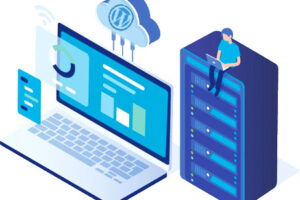Let’s face it—eCommerce isn’t what it used to be.
Once upon a time, all you needed was a decent product, a barely functioning cart, and a PayPal button hiding in the footer like a shy teenager at prom. Fast forward to now, and headless commerce is the cool kid throwing after-parties with APIs, microservices, and a front end that doesn’t even know what the backend had for breakfast.
And when it comes to making this headless magic work with your ERP system—you know, the nerve center where inventory, accounting, logistics, and your dreams either flourish or flatline—you’ll need something a little more elegant than “turn it off and on again.”
So here it is: our Headless Commerce ERP Integration Guide, from the team at Kanhasoft, your friendly neighborhood ERP software development company (and humble architects of digital wizardry). Expect clarity, APIs, and a few snarky observations we’ve collected from the trenches.
What Is Headless Commerce? (No, it’s not a horror movie)
In the simplest terms: headless commerce is when the frontend (what users see) is separated from the backend (where all the data lives). They communicate via APIs, which is a fancy way of saying they pass notes behind the teacher’s back.
The benefit? You can build ultra-fast, custom storefronts while still using robust backend systems like an ERP.
The downside? Integration is a thing. A complicated thing. A “don’t try this without caffeine and/or Kanhasoft on speed dial” thing.
Why ERP Integration Matters in a Headless Setup
Imagine your storefront says, “Only 2 items left in stock!” while your ERP says, “We sold out last week, buddy.” That’s what happens when your systems are out of sync.
ERP integration ensures that your:
-
Inventory is accurate
-
Orders get processed
-
Customers get updates
-
Finance doesn’t throw a stapler at you
Without it, you’re basically juggling chainsaws blindfolded. And while we love a challenge—juggling is not part of our services (yet).
APIs: The Unsung Heroes of Headless Integration
We’ve seen clients ask, “Can’t we just connect it somehow?” Yes. With APIs.
APIs (Application Programming Interfaces) are like waiters at a high-end restaurant—carrying requests and delivering responses without spilling the soup. They let your frontend talk to your ERP system securely and reliably.
When building custom headless commerce solutions, we typically use:
-
REST APIs: Reliable and widely supported
-
GraphQL: Flexible queries for frontend freedom
-
Webhooks: Instant alerts for real-time updates (think: “Order placed!” pings)
Pro tip from the Kanhasoft team: Make sure your ERP supports modern APIs. We’ve had to dig clients out of SOAP-based nightmares from 2007. Don’t be that company.
Middleware: The Matchmaker Between Frontend and ERP
Sometimes, the ERP and the frontend just don’t speak the same language. That’s where middleware comes in.
Middleware is like that one mutual friend who smooths over awkward first dates. It:
-
Translates data formats (e.g., XML to JSON)
-
Manages authentication and tokens
-
Adds business logic between systems (like “Don’t ship to P.O. Boxes—again, Steve.”)
At Kanhasoft, we often build custom middleware for clients using platforms like:
-
Node.js or .NET Core
-
AWS Lambda functions for event-driven workflows
-
iPaaS tools (like MuleSoft or Boomi) for enterprise-level orchestration
Sometimes it’s custom code; sometimes it’s low-code platforms. We like options. (Except when the option is “rewrite the entire ERP.” Pass.)
Best Practices for Headless ERP Integration
Okay, so you’re all fired up and ready to headbutt your ERP system into a headless-friendly masterpiece. Slow down, cowboy. Let’s go over some best practices:
1. Map Out Your Data Flows First
Don’t just start coding. Sketch out what data needs to go where—inventory, SKUs, pricing, customer info, order statuses. It’ll save you therapy bills later.
2. Use Asynchronous Processing Where Possible
Nobody likes waiting. Especially not customers. Async APIs and queuing systems (hello, RabbitMQ) help process large orders or updates without lagging the site.
3. Handle Failures Gracefully
ERP systems can be grumpy. Always plan for:
-
Retries
-
Fallbacks
-
Alerts (a Slack ping is better than discovering issues from a tweet)
4. Version Your APIs
Your systems will evolve. Keep APIs backward compatible and versioned so you don’t break everything on update day.
5. Security, Security, Security
We can’t stress this enough. Use:
-
OAuth 2.0
-
Token expiration
-
Rate limiting
Because nothing says “oops” like leaking your customer database on Reddit.
Real Talk: A Client Anecdote
We once worked with an ambitious furniture brand (we won’t name names, but their ottomans were delightful). They wanted a flashy, headless Vue.js frontend and their ERP—an older, crusty beast—was reluctant.
Middleware saved the day. We built a lightweight Node.js layer that modernized their ERP responses, handled rate limits, and queued order fulfillment jobs.
Six weeks later, they were running smoother than a Scandinavian birchwood coffee table.
When to Call in the Experts (That’s Us, Hello)
Look, we love when teams get their hands dirty. But ERP integration is messy, delicate, and occasionally full of surprises—like an IKEA bookshelf without instructions.
As a seasoned ERP software development company, we at Kanhasoft specialize in turning chaos into cohesion. Whether you need:
-
Custom ERP integration
-
API strategy
-
Middleware development
-
Full-blown headless commerce builds
—we’re your people. Or at least, we’re better than your cousin who once made a Wix site and thinks he’s a dev now.
SEO Note for the Robots (and the Humans Reading This for Research)
If you’re shopping around for an ERP software development company that understands headless commerce integration, Kanhasoft is your go-to team. We live and breathe APIs, middleware, and eCommerce systems—and we don’t charge extra for puns (yet).
Final Thoughts: Wrapping Up With a Bow (and a Bit of Sass)
So, is ERP integration for headless commerce hard? Yep. Is it worth it? Absolutely.
When done right, it unlocks seamless operations, better customer experiences, and scalability that won’t give your tech team a nervous breakdown.
Let Kanhasoft handle the heavy lifting. You focus on selling awesome products. We’ll focus on making sure your ERP system doesn’t try to sabotage you (again).
And remember: headless commerce without ERP integration is just… chaos in a trench coat. Let’s not do that.
FAQs: Because You Were Going to Google These Anyway
1. What is the difference between headless commerce and traditional eCommerce?
Traditional eCommerce platforms tie the frontend and backend together. Headless commerce separates them, allowing developers to build flexible frontends using APIs.
2. Can any ERP system work with headless commerce?
Not exactly. Your ERP system needs to support API access or at least offer connectors. If it’s older than your intern, we’ll probably need to build middleware.
3. Do I need custom development for ERP integration?
Usually, yes. Off-the-shelf plugins are limited. A custom approach ensures the systems play nicely and your business rules are followed.
4. How long does headless ERP integration take?
Depends on complexity. Simple setups = a few weeks. Complex, multi-channel ERPs = several months (with caffeine).
5. Why should I work with Kanhasoft?
Because we know our stuff, we build things that actually work, and we have a sense of humor about it. Also, we won’t ghost you after deployment.


